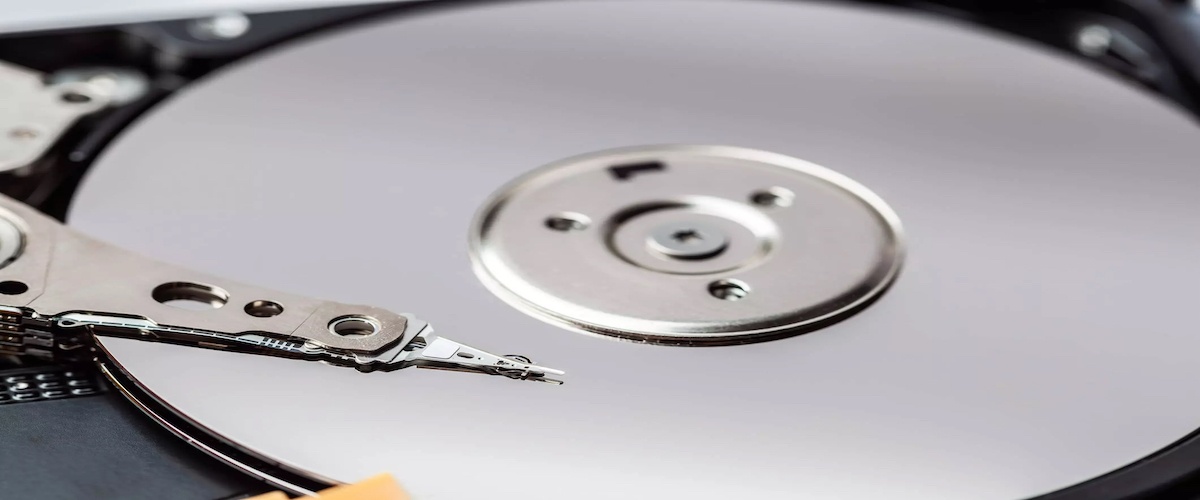Flash storage dominates the industry press so much so that it may be easy to forget the use cases for hard disk drives, but they do exist. While flash-only vendors claim otherwise, there are many situations where hard disk drive-based storage is superior, even for production use cases. Hard Disk Drives (HDD), as discussed in “The Case for Hard Drive Storage,” now and for the foreseeable future remain the ideal storage medium for near-active data.
Often lost in the all-flash hype, despite not being as responsive as flash media, hard disk drives—especially when used in quantity—still deliver excellent performance. The performance difference of occasional access of data from that tier versus the flash tier goes mostly unnoticed by applications and users. The problem is that most vendors don’t have an Intelligent Hybrid Storage solution that leverages a large flash tier and intelligent data movement. StorONE’s Storage Engine includes Intelligent Hybrid Storage at no additional charge.
The Database Use Case for Hard Disk
Using hard drives for database storage may seem shocking in the era of all-flash arrays (AFA). The reality is that when the storage solutions use flash and hard disk drives together, they make an ideal storage solution for this use case. A database is a collection of files, not just one file. It consists of a data file that stores the information and an index file or files that enable the quick search of the data within the data file. Also, they often provide some form of log files that store the most recent transactions so they can be “replayed” or “undone” in the case of an error. These index and log files are significantly smaller than the database itself but are far more active.
An intelligent hybrid storage solution can dedicate specific volumes to the flash tier to always enjoy the full performance of memory-based storage media. Again, these files are small; committing them to the flash tier won’t consume too much capacity. The database’s data file is larger than the index and log files but typically much smaller than other data sets within the data center.
The IT planner has, and always should have, a choice in how these files are deployed. In most cases, a hybrid volume with a larger flash tier will continue to provide excellent performance to users. Instead of files that age, this data file has rows of data. Like files on a file system, those rows are typically very active at the point of initial creation and then become less active over time. An intelligent hybrid storage solution can move data at a block level so that only the old rows move to the hard disk tier. If a row becomes active again, the hybrid system can quickly move that row back to flash.
Depending on the type of database, moving old rows from flash to hard disk drives can save a considerable IT budget. However, if the database is relatively small or if the IT planner doesn’t want to risk any performance inconsistency, then dedicating it to a flash tier is always an option.
The Virtualization Use Case for Hard Disk
Performance-sensitive virtual machines (VM) are becoming more commonplace, but in most cases, the large majority of VMs have virtually no performance requirements. These VMs are often utility VMs, and the storage IO performance is not essential. With an intelligent hybrid storage solution, virtualization administrators can set their performance-critical VMs on datastores that are flash only. The rest of their VM population can be stored on hard disk drives. The more active VMs in the second group will still benefit from flash storage read performance, and all inbound write IO will first go to flash. Again, given the storage requirements of most virtual environments, the ability to automatically move data to lower-cost hard disk drives can significantly reduce the total storage cost of ownership (TCO).
The NAS Use Case for Hard Disk
Today, unstructured data is the largest consumer of capacity in almost every data center. This data, more than any other, clearly benefits from an intelligent hybrid storage strategy. First, in most cases, 80% or more of unstructured data is not accessed again after its initial days in creation and modification. Also, the percentage of unused data increases as the capacity consumption increases.
There are, of course, multiple NAS use cases. For most of those use cases, the data falls into that 80%, and users will likely never access it. It is being saved “just in case.” Keeping this data on hard disk drives lowers the TCO significantly. The occasional access to this data is rare, and the extra five milliseconds or so to access it won’t impact productivity. This use case is effectively an archive, and even if you had a formal archive process in place, you could confidently use StorONE for that use case as well.
In other use cases, an organization may access older data to respond to a particular request. An example might be video footage from a surveillance camera. This type of data is very large but is sequentially read. Hard disk drives, especially in quantity, deliver excellent bandwidth and should be able to provide data to the application or user fast enough that productivity will not be hindered. If the application alters or accesses this data repeatedly for a short time, StorONE’s Intelligent Hybrid Storage will also move it to the flash tier.
Unstructured data use cases that access the data continuously and even access old data are unpredictable and may find that hard disk drives may impact performance. In this use case, intelligent hybrid storage still has a role. The customer can use a much larger flash tier to reduce the number of accesses to the hard disk tier. Even this use case will still benefit from hard disk. StorONE’s Intelligent Hybrid Storage can support an unlimited number of snapshots, retain those snapshots indefinitely, and tier old snapshots to the hard disk tier. As a result, StorONE can address one of the biggest challenges facing large unstructured data sets: how to back them up while still delivering the performance they need.
The Backup Use Case for Hard Disk Storage
It takes time to gain enough confidence in a storage solution to migrate all data to it. During that time, StorONE can use its intelligent hybrid technology as a backup target. A small flash area allows for writes to the HDD tier to be sequential instead of random. Flash is also an ideal area to execute “instant recovery” restores, common in today’s applications.
Over time as more production workloads migrate to the StorONE S1:Enterprise Platform, you can start eliminating the secondary backup process. As we discuss in our virtual whiteboard session, “Using Replication for More Than DR,” using a combination of our snapshots and cascading replication technology, you can quickly meet the “3-2-1” rule of backup with StorONE and eliminate the need for a secondary backup process.
Conclusion
The reality is that flash, and hard disk storage should never be considered an “either-or” choice. A platform approach to storage gives IT the ability to leverage both to solve their business challenges at a price that is within budget. The key is flexibility. The intelligent hybrid storage solution needs to dial-up or dial-down flash usage based on the specific use case. It also needs to intelligently prepare the lower tier by writing to it sequentially and recalling it based on the recall type.
As capacity requirements continue to scale out of control, the sheer cost and, frankly, the availability of flash media is challenging. By augmenting that capacity with hard disk drives, IT can be a “hero” to the organization.



